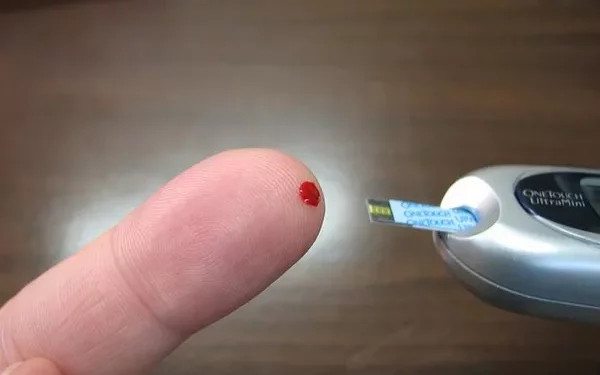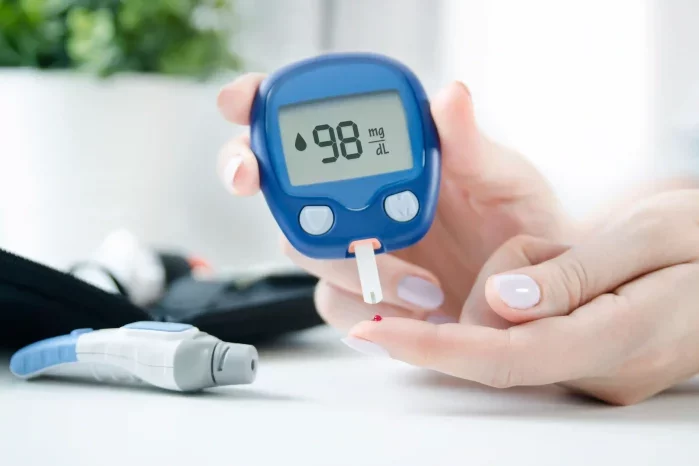Hyperglycemia, or high blood sugar, is a common condition for individuals with diabetes. It occurs when the blood glucose levels exceed the normal range. Understanding hyperglycemia is crucial for effective management and prevention of potential complications. This article will explore the three classic signs of hyperglycemia, their underlying mechanisms, and how to manage and prevent high blood sugar levels.
Understanding Hyperglycemia
What is Hyperglycemia?
Hyperglycemia is defined as a condition where the blood glucose levels are elevated. For most people, normal fasting blood glucose levels range from 70 to 100 mg/dL. A reading above 130 mg/dL before meals or higher than 180 mg/dL two hours after eating is generally considered hyperglycemia. Persistent hyperglycemia can lead to significant health issues, including diabetic ketoacidosis (DKA) and hyperglycemic hyperosmolar state (HHS), both of which are medical emergencies.
Causes of Hyperglycemia
Several factors can contribute to hyperglycemia, including:
Inadequate Insulin Production: Individuals with type 1 diabetes may not produce sufficient insulin.
Insulin Resistance: In type 2 diabetes, the body’s cells may not respond effectively to insulin.
Dietary Choices: Consuming foods high in carbohydrates and sugars can lead to elevated blood glucose levels.
Stress: Physical or emotional stress can trigger the release of hormones that increase blood sugar.
Illness or Infection: Illness can raise blood sugar levels due to the stress on the body.
Medications: Certain medications, such as corticosteroids, can elevate blood glucose levels.
Why is it Important to Recognize Hyperglycemia?
Recognizing and managing hyperglycemia is vital to prevent complications associated with diabetes. Chronic high blood sugar can lead to serious long-term health issues, including:
Heart Disease: Increased risk of heart attacks and strokes.
Nerve Damage (Neuropathy): High blood sugar can damage nerves, leading to pain and numbness, particularly in the extremities.
Kidney Damage (Nephropathy): Prolonged hyperglycemia can harm the kidneys’ filtering system, potentially leading to kidney failure.
Vision Problems: High blood sugar can damage the blood vessels in the retina, leading to diabetic retinopathy.
The Three Classic Signs of Hyperglycemia
The classic signs of hyperglycemia are:
- Frequent Urination (Polyuria)
- Increased Thirst (Polydipsia)
- Increased Hunger (Polyphagia)
1. Frequent Urination (Polyuria)
Mechanism Behind Polyuria
Frequent urination, or polyuria, occurs when excess glucose in the blood spills over into the urine. The kidneys filter out glucose, and when blood sugar levels are high, they cannot reabsorb all the glucose. As glucose exits the body through urine, it draws water along with it through a process called osmotic diuresis. This results in increased urine production and frequency.
Consequences of Polyuria
Frequent urination can lead to dehydration as the body loses significant amounts of fluid. This can cause symptoms such as:
- Dry mouth
- Fatigue
- Dizziness
Severe dehydration may require medical intervention, particularly in individuals with uncontrolled diabetes.
2. Increased Thirst (Polydipsia)
Mechanism Behind Polydipsia
Increased thirst, known as polydipsia, often accompanies polyuria. As the body loses fluids through frequent urination, it triggers the thirst mechanism to encourage fluid intake. The hypothalamus, which regulates thirst, senses the dehydration and signals the body to drink more water to restore balance.
Consequences of Polydipsia
Individuals may find themselves drinking large amounts of water, but even with increased fluid intake, they may still experience dehydration. This cycle can contribute to further hyperglycemia and lead to a feeling of excessive thirst even after drinking.
3. Increased Hunger (Polyphagia)
Mechanism Behind Polyphagia
Increased hunger, or polyphagia, occurs when the body’s cells are not receiving adequate glucose for energy due to insulin resistance or insufficient insulin production. Although the blood sugar levels are high, the cells are unable to utilize glucose effectively, leading the body to signal for more food intake in an attempt to satisfy energy needs.
Consequences of Polyphagia
People with hyperglycemia may experience persistent hunger despite eating regular meals. This can lead to overeating and further exacerbate hyperglycemia, creating a vicious cycle. Additionally, excessive hunger may lead to unhealthy food choices, particularly those high in sugar and carbohydrates, which can worsen blood glucose levels.
Recognizing Hyperglycemia Early
Signs and Symptoms Beyond the Classic Signs
In addition to the classic signs of hyperglycemia, individuals may experience other symptoms, including:
Fatigue: High blood sugar can cause a lack of energy, making individuals feel tired and sluggish.
Blurred Vision: Elevated blood sugar levels can affect the lens of the eye, leading to temporary vision changes.
Headaches: Fluctuations in blood sugar levels can trigger headaches in some individuals.
Skin Issues: Hyperglycemia may lead to skin infections or slow-healing wounds.
Recognizing these symptoms early can help in managing blood sugar levels before they reach critical levels.
Managing Hyperglycemia
1. Monitoring Blood Sugar Levels
Regular monitoring of blood glucose levels is crucial for managing hyperglycemia. Individuals with diabetes should have a blood glucose monitor to check their levels multiple times a day, especially before and after meals. Keeping a log of blood sugar readings can help identify patterns and triggers for hyperglycemia.
2. Medication Management
For individuals with diabetes, following a prescribed medication regimen is essential. This may include:
Insulin Therapy: Insulin injections or an insulin pump may be necessary for individuals with type 1 diabetes or those with type 2 diabetes who require insulin.
Oral Medications: Various oral medications can help improve insulin sensitivity and lower blood sugar levels in type 2 diabetes.
3. Dietary Adjustments
Making dietary changes can significantly impact blood sugar levels. Consider the following strategies:
Choose Low-Glycemic Index Foods: Foods with a low glycemic index are digested more slowly, resulting in a gradual rise in blood sugar levels. Examples include whole grains, legumes, and non-starchy vegetables.
Control Portion Sizes: Eating smaller, more frequent meals can help stabilize blood sugar levels throughout the day.
Limit Sugary Foods and Beverages: Reducing the intake of sweets and sugary drinks can help prevent spikes in blood glucose levels.
4. Regular Physical Activity
Exercise is an effective way to improve insulin sensitivity and lower blood sugar levels. Aim for at least 150 minutes of moderate-intensity aerobic activity each week. Activities such as walking, cycling, and swimming can help manage weight and improve overall health.
5. Hydration
Staying hydrated is vital for individuals with hyperglycemia. Drinking plenty of water can help flush out excess glucose and prevent dehydration caused by polyuria.
6. Stress Management
Stress can elevate blood sugar levels due to the release of stress hormones. Implement stress-reduction techniques such as:
Mindfulness and Meditation: These practices can help calm the mind and reduce stress levels.
Regular Physical Activity: Exercise is a powerful stress reliever.
Adequate Sleep: Prioritizing sleep can improve overall health and help manage stress.
7. Regular Medical Check-Ups
Regular check-ups with a healthcare provider are crucial for managing hyperglycemia and diabetes. Routine blood tests can help monitor kidney function, cholesterol levels, and overall health.
Conclusion
Understanding the three classic signs of hyperglycemia—frequent urination, increased thirst, and increased hunger—is essential for effective diabetes management. Recognizing these symptoms early can prevent complications and help maintain blood sugar levels within a healthy range.
By monitoring blood sugar levels, making dietary adjustments, engaging in regular physical activity, and managing stress, individuals can effectively combat hyperglycemia. Consulting with healthcare professionals for personalized advice and treatment plans is crucial for achieving optimal health and well-being.
With proactive management and lifestyle changes, individuals with diabetes can lead healthy lives and reduce the risk of hyperglycemia-related complications. Always remember to consult a healthcare provider for guidance tailored to individual needs.
Related topics:



























